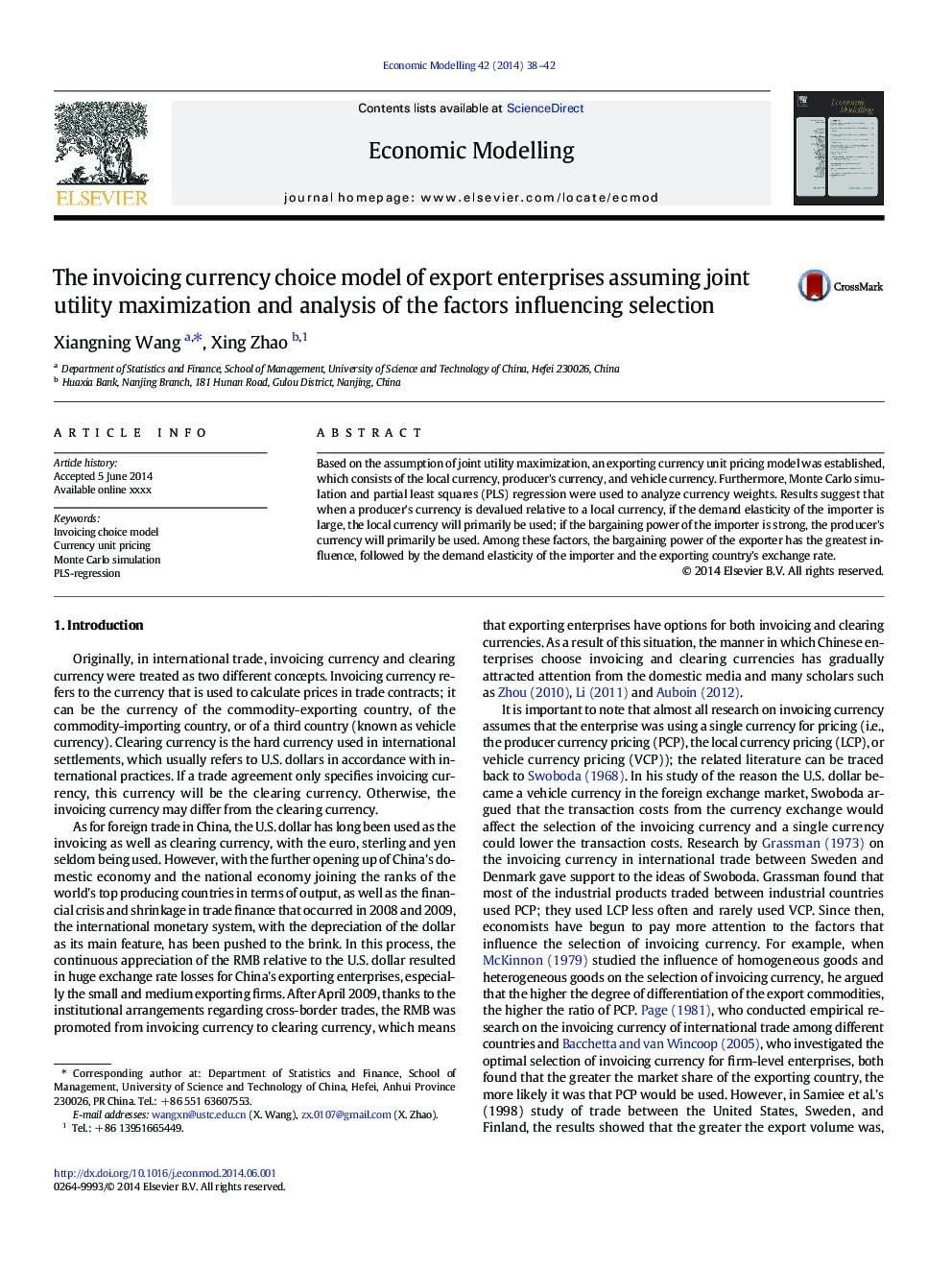| Article ID | Journal | Published Year | Pages | File Type |
|---|---|---|---|---|
| 5054004 | Economic Modelling | 2014 | 5 Pages |
Abstract
Based on the assumption of joint utility maximization, an exporting currency unit pricing model was established, which consists of the local currency, producer's currency, and vehicle currency. Furthermore, Monte Carlo simulation and partial least squares (PLS) regression were used to analyze currency weights. Results suggest that when a producer's currency is devalued relative to a local currency, if the demand elasticity of the importer is large, the local currency will primarily be used; if the bargaining power of the importer is strong, the producer's currency will primarily be used. Among these factors, the bargaining power of the exporter has the greatest influence, followed by the demand elasticity of the importer and the exporting country's exchange rate.
Keywords
Related Topics
Social Sciences and Humanities
Economics, Econometrics and Finance
Economics and Econometrics
Authors
Xiangning Wang, Xing Zhao,
